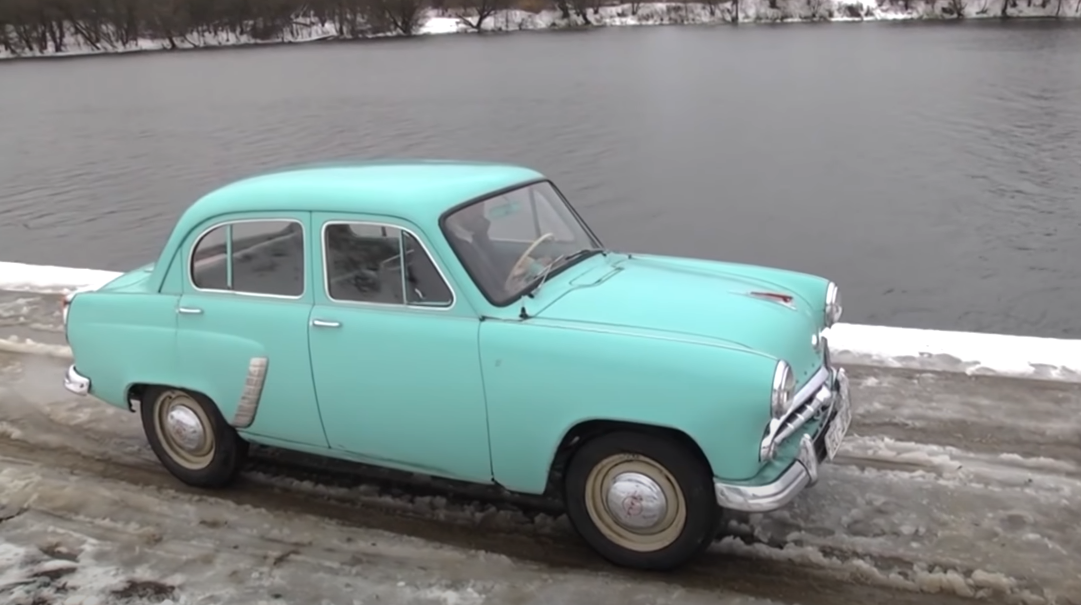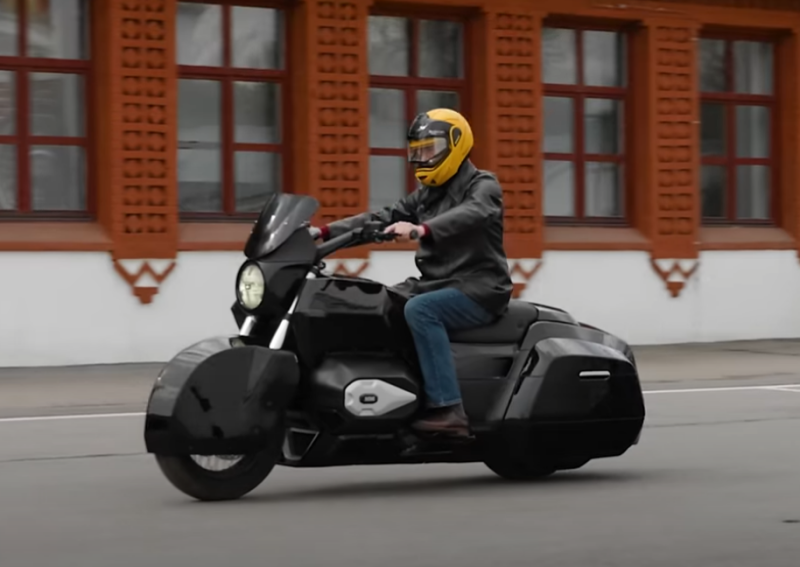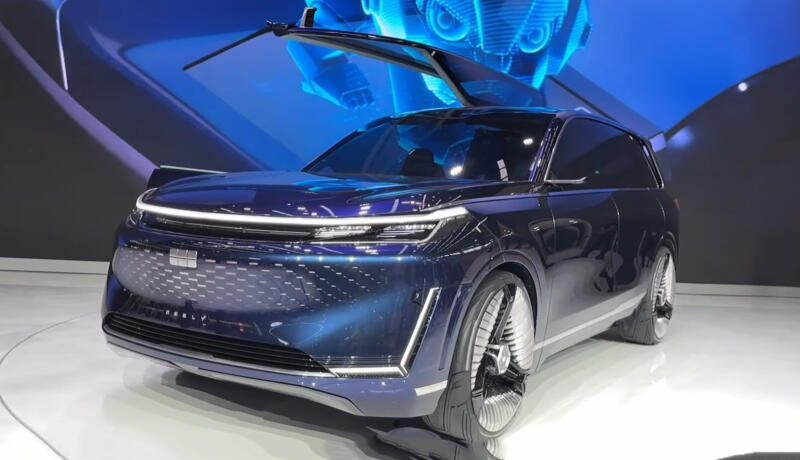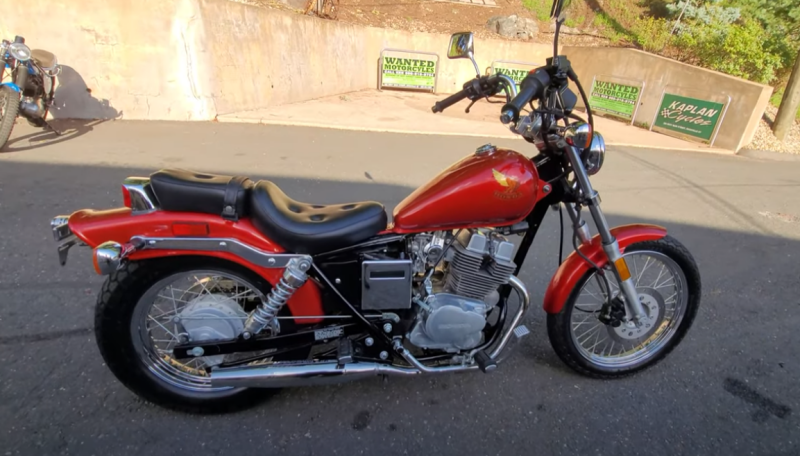Why is Moskvich-400 bad?
After the end of World War II, the Moscow Small Car Plant received equipment for the production of Opel Kadett K38 and all the rest of the technical documentation. Of course, the machines were broken, there were not enough drawings, but with the help of German engineers, the USSR launched the production of Moskvich-400.
The newspapers of that time wrote that the domestic small car was in no way inferior to Opel.
The designers finalized the car:
- ? Engine power increased
- ? The gearbox received a stalk
But all the same, if we compare the Opel Cadet with the Moskvich-400, the "German" was more modern. In the USSR, the car was developed in the conditions of post-war devastation.
 Original Opel Kadett. Photo: Youtube.com
Original Opel Kadett. Photo: Youtube.comIn the early 1950s, it became clear that the Moskvich-400 needed to be urgently changed to something technically perfect, in line with the spirit of the times. No upgrades to the “old man” will help anymore - only a model in a new body.
Birth of Moskvich-402
Work on the car began in 1950. At that time, the design bureau at MZMA did not have experienced engineers. Therefore, for the development of Moskvich-402, specialists from the GAZ and ZiS plants were attracted.
I. I. Okunev helped to make a new engine, he switched to MZMA from the Moscow Motorcycle, which at that time was just being closed.
The main role in the development of Moskvich-402 was played by employees of the Gorky Automobile Plant. No wonder the car received a design like the Volga. By the way, molds for body parts were made at GAZ.
In 1951, 7 experimental cars Moskvich-402-425 were assembled. Each of the created copies was somewhat different - during the tests, the designers chose a single design.
The first batch of production cars was released only in 1956. Moskvich-402 has become modern.
It received many features that were not previously used in the automotive industry of the USSR:
- ? Panoramic windshield - curved
- ? Telescopic shock absorbers
- ? Front pivotless suspension
- ? Doorbell buttons
The car became so attractive in appearance, it was bought with pleasure abroad.
Features of the 402
Unlike the previous car, the car received a spacious body of increased rigidity. There were 5 people inside. Previously, it was possible to get into the trunk only from the inside, now this compartment had access from the outside.
 The Muscovite was handsome and modern. Photo: Youtube.com
The Muscovite was handsome and modern. Photo: Youtube.comThe car received a regular heater, direction indicators and even a radio. In the early 1950s, this was not the case for most European-made foreign cars.
Due to the use of an independent pivotless front suspension, the Moskvich-402 has become more comfortable on the go. Electrical equipment was installed at 12 volts - before it was six-volt, outdated and problematic.
Although the rear axle was left unchanged, the gearbox received a special extension. This allowed the engineers to shorten the gimbal, which further reduced vibration on the go.
Of course, Moskvich-402 is very tough, but when compared with the previous version, it is quite comfortable in motion.
Birth of Moskvich-407
The new MZMA model was good for everyone, but the lower valve engine, in fact, copied from the German Opel Kadett K38, was hopelessly outdated. Although its volume was increased for Moskvich-402, it is still 22,7 liters. With. per ton of machine weight is not enough. For foreign cars, these figures were one and a half to two times higher - up to 40 liters. With.
 Two-color Muscovites then went mainly for export. Photo: Youtube.com
Two-color Muscovites then went mainly for export. Photo: Youtube.comThe designers decided to develop a new, overhead valve motor that would meet all international standards. The engine was made, assigning it the index 406, but they could not be put into mass production.
The state considered it inappropriate to allocate foreign exchange reserves for the purchase of modern machine tools abroad. The management of the plant was ordered to cope on its own.
As a result, a new engine was developed based on the same unit, leading the pedigree from the Opel Kadett K38, but with a number of improvements.
Motor received:
- ? Working volume 1 360 cm3
- ? Power 45 l. With.
- ? Overhead valves
- ? aluminum cylinder head
The designers managed to do everything in their power at that time - the engine was really good, as evidenced by the high demand for Moskvich-407 abroad. Approximately 50% of the cars of this model were exported.
 Moskvich-407 engine. Photo: Youtube.com
Moskvich-407 engine. Photo: Youtube.comThe new car has not changed much in appearance. It can be distinguished by the appearance of a decorative stainless steel element on the sides and shortened moldings on the rear doors.
Features Moskvich-407
The installation of a new engine entailed the use of gasoline with a higher octane rating. The instruction manual indicated that the Moskvich-407 needed to be refueled by the A-72. However, in extreme cases, it was still allowed to use 66 gasoline.
Thanks to the overhead valve engine with increased volume and power, the vehicle's cross-country ability has increased. The cruising speed recommended for this model is 90 km/h. Even in hot summer it was possible to move around for hours without fear of overheating the engine.
If it was necessary to overtake, the engine easily accelerated the car to 110 km / h.
 Perfectly restored Moskvich-407. Photo: Youtube.com
Perfectly restored Moskvich-407. Photo: Youtube.comOver the years of production, the car has received a number of changes:
- ? 1958 - the appearance of the inscription "Moskvich" on the hood
- ? 1959 - 4-checkpoint
- ? 1960 - non-hypoid rear axle changed to hepoid, new grille
- ? 1962 - bumpers lost their characteristic "fangs" to simplify and reduce the cost of production
It should be noted that the restyling of Soviet cars followed a special principle. The machines were not only modernized, but also simplified in order to reduce costs. Therefore, now it is the models of the first years of production that are in demand among collectors.
Transitional Moskvich-403
Model 403 is considered transitional, and it was produced for a short time - from 1963 to 1965. Externally, the car practically did not differ from the Moskvich-407, except for the three-piece rear lights.
 Moskvich-403. Photo: Youtube.com
Moskvich-403. Photo: Youtube.comBut technically the transitional model was much more perfect. She received a number of components and assemblies from a new generation car, only the body and engine remained the same.
Many people wonder why the Moskvich-403 appeared after the 407 model. This is a complicated matter, and it is connected with the convenience for the manufacturer. The problem is that the transitional option was temporary, and it was inconvenient to give it a new index (and that's all the details too). Therefore, they revived the old 403, which existed 10 years before, and belonged to one of the experimental engines that did not go into series at one time.
Tuning or restoration?
Now you can find interesting projects created on the basis of Moskvich-402/407/403. Basically, cars are restored, but it happens when they are remade by installing powerful V6 or V8 engines.
But do not rush to make a sports model out of an old little car - its safety margin is not designed for such bullying. It is better to restore Moskvich to the ideal, it is possible to the original state, or just to restyle in the spirit of modernity.
 Inside, of course, cramped. Photo: Youtube.com
Inside, of course, cramped. Photo: Youtube.comSuch cars are already a real retro, and it is desirable to keep them in their original form. It will not only be something to show to children and grandchildren, but also to remember the carefree time yourself!










